PMMA, also known as acrylic, is a transparent thermoplastic that ranks among the world’s most widely used plastics.
From architecture and automotive to medical and consumer goods, it is almost omnipresent.
However, this ubiquity raises a critical question: Is PMMA safe?
Consequently, this article will conduct a comprehensive analysis of PMMA’s chemical properties, its application environments, and its potential impacts on human health and the environment, offering a scientifically objective understanding.
What Is PMMA?
Polymethyl methacrylate (PMMA), also known as acrylic or Plexiglas, is a non-crystalline plastic formed by polymerizing methyl methacrylate (MMA) monomer with a small amount of acrylate comonomers.
It is an early-developed, significant thermoplastic polymer material that first appeared in Europe and developed in the 1990s.
PMMA is known for its excellent transparency, optical properties, impact resistance, and aesthetics, earning it the nickname “Queen of Plastics.”
The relative molecular mass of PMMA is about 2 million, and the molecular chains that form it are quite flexible, making PMMA stronger than ordinary glass, with 7 to 18 times higher tensile and impact resistance.
So what does PMMA contain? Let’s read on.
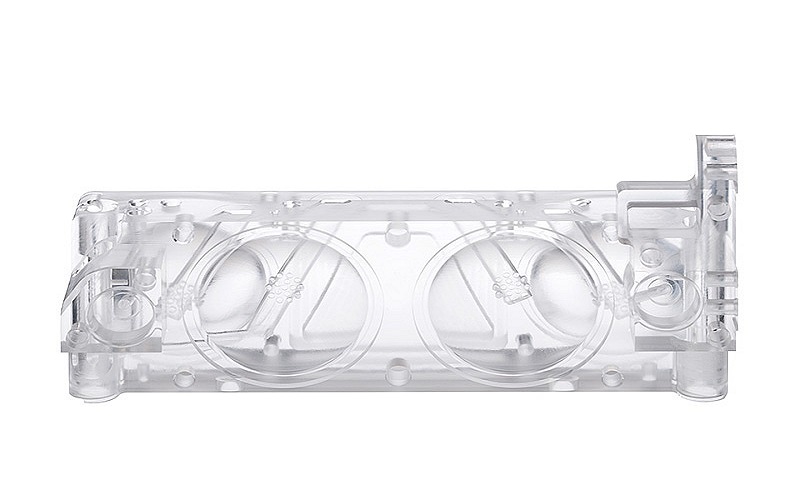
What Is PMMA Made Of?
From a chemical perspective, PMMA is a polymer compound formed by the polymerization of the monomer MMA .
MMA itself is relatively stable in the environment, and upon polymerization into PMMA, most of its monomeric form is converted into long polymer chains, significantly reducing its potential hazards to the environment and human health.
At room temperature, PMMA is chemically stable, not prone to decomposition, and does not release harmful substances.
It exhibits good resistance to heat,light , humidity, and most chemicals.
Therefore, under normal usage and handling conditions, PMMA does not pose a threat to human health or the environment.

Safety Factors In PMMA Manufacturing Processing
PMMA is typically processed through casting, injection molding, mechanical machining, and thermal forming, all of which allow for excellent post-processing capabilities.
However, it is essential to be aware of certain safety considerations during these processes.
First and foremost, one of the primary raw materials for PMMA is methyl methacrylate (MMA), the vapors of which can irritate the skin, eyes, and respiratory system.
For safety reasons, it is necessary to use personal protective equipment, such as safety goggles, protective gloves, and dust masks.
Secondly, MMA is highly flammable, and its vapors can form explosive mixtures with air.
Therefore, when handling MMA or PMMA, fire prevention measures should be taken, and good ventilation must be ensured.
In addition, the processes of PMMA injection molding and extrusion molding generally require high temperatures, and accidental contact with hot equipment or molten PMMA can cause thermal injuries.
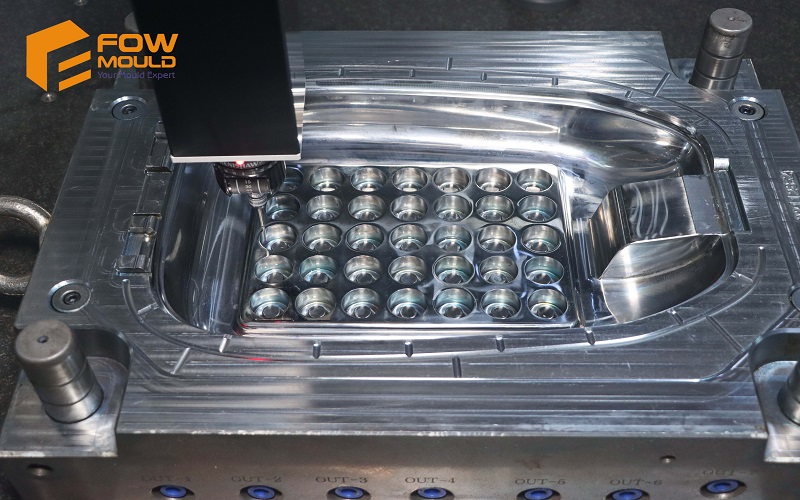
Is Acrylic Plastic Toxic?
As public concern over the safety of plastic products increases, plastic manufacturing companies are placing greater emphasis on product quality and safety.
Firstly, it’s important to understand the composition of acrylic materials.
Acrylic is made from Poly(methyl methacrylate) (PMMA) and does not contain BPA components.
During normal use and processing, acrylic materials do not release toxic substances, thus it can be considered that acrylic materials themselves are not toxic.
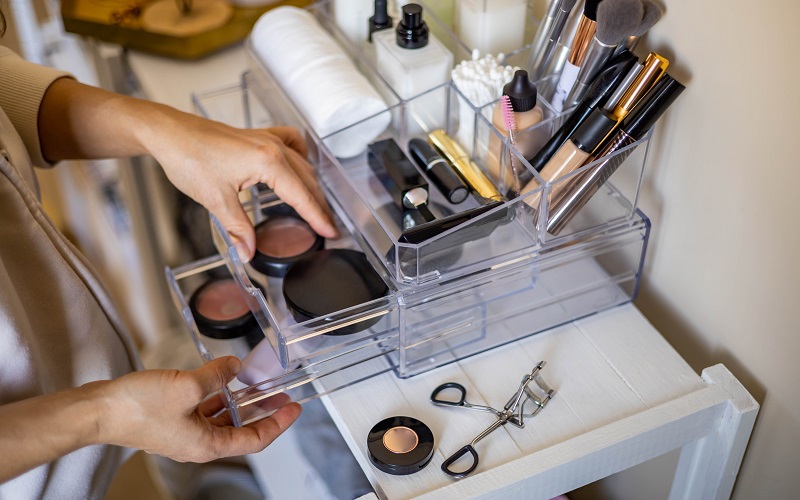
Is PMMA Plastic Safe To Use?
The non-toxic nature of PMMA, combined with its inherent characteristics, makes it widely used in common products for daily life.
Its outstanding toughness and high resistance to ultraviolet rays make it an ideal choice for applications such as door and window profiles, awnings, panels, and external wall designs.
These properties ensure that products based on PMMA can maintain a long service life and performance even under harsh environmental conditions.
Additionally, the high biocompatibility of PMMA allows it to be effectively applied in the medical field, including dental fillings and bone cement.
This characteristic ensures that PMMA can safely come into direct contact with human tissues, providing support and stability without adverse reactions, making it an important material in both construction and medical fields.
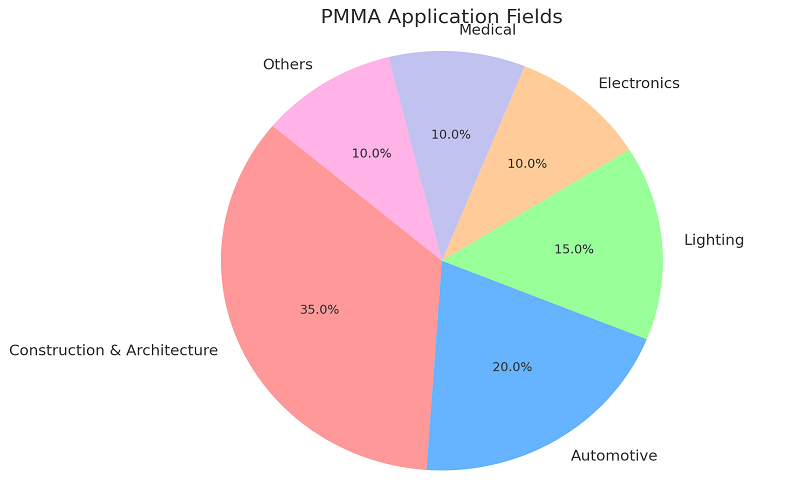
Is PMMA Harmful To Body?
Under normal use and contact, PMMA plastic is safe for humans. PMMA is a non-toxic, odorless, and non-irritating material that does not release harmful substances.
However, when acrylic materials are subjected to high-temperature processing or burning, they may emit harmful gases.
These harmful gases include carbon monoxide, carbon dioxide, and some organic compounds, which can pose risks to human health. Additionally, the plastic processing and manufacturing of acrylic materials can produce dust and particulate matter.
Prolonged inhalation of these dust and particles may affect the respiratory system and even trigger allergic reactions.
Thus, when considering the impact of PMMA on human health, it becomes crucial to manage its exposure to high temperatures or direct burning processes carefully to prevent the release of toxic gases.
As well, implementing protective measures during the processing of PMMA, such as wearing masks and gloves, is directly linked to minimizing potential health risks associated with handling this material.
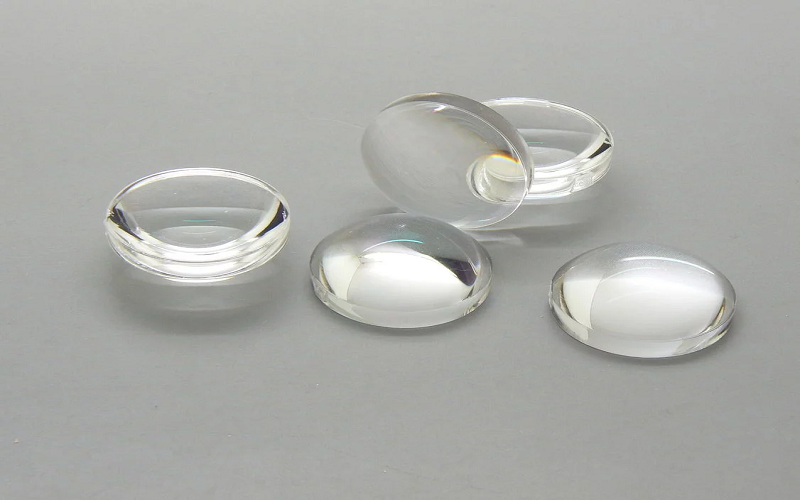
PMMA For Food Contact Applications:Safety and Compliance
In the manufacturing of food containers and similar products, it’s necessary to use raw materials that meet food safety standards and to adopt appropriate production techniques and processing methods to ensure the safety and hygiene of the products.
Therefore, only acrylic PMMA materials that have been certified for food safety can be considered food-grade plastics.
These acrylic PMMA materials typically comply with food safety standards such as the FDA (U.S. Food and Drug Administration), China’s GB4806.6, and the European Union’s EU10-2011, making them safe for use in the manufacturing of food contact products.
It’s important to note that even when using acrylic PMMA materials that meet food safety standards, attention must still be given to their conditions and limitations of use.
For example, during use, one should not exceed the material’s maximum temperature and stress limits to prevent contamination and impact on the food.
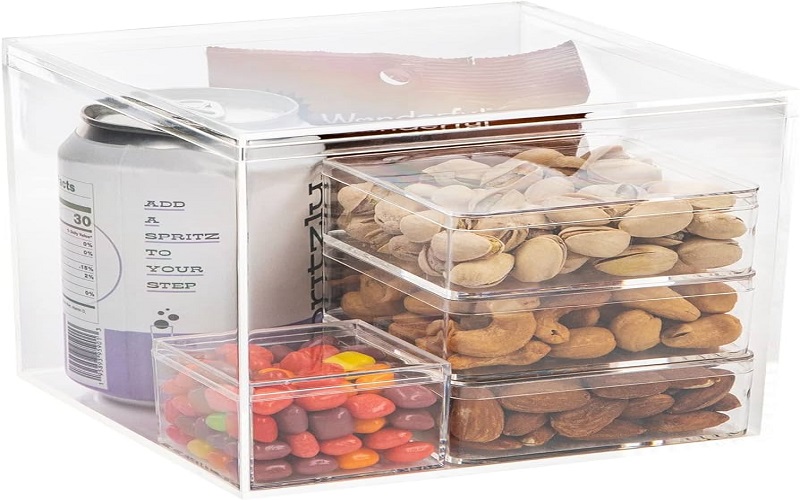
Is PMMA Recyclable?
PMMA is known as the synthetic organic glass with the best light transmittance to date, earning it the nickname “plastic crystal.”
However, many environmentally conscious customers might have another concern: Is PMMA recyclable, and does it cause significant harm to the environment?
In terms of sustainability, Polymethyl methacrylate is a non-toxic, eco-friendly material that can be decomposed back into its acrylic raw materials with high efficiency through heating.
While its recycling rate may not be as high as PET or HDPE, it can still be effectively recycled and reused through proper collection and sorting systems.
Recycling Methods For PMMA
Process Type | Description | Advantages | Disadvantages |
Physical Recycling | Mechanical grinding into pellets, followed by remolding into new products. | Simple and cost-effective, preserves physical properties. | Limited by the quality and cleanliness of the input material. |
Chemical Recycling | Breaking down PMMA to its monomers, which are then purified and polymerized into new PMMA. | Allows for the recovery of pure monomers, suitable for high-quality applications. | Technologically complex and more expensive. |
Energy Recovery | Burning PMMA for energy production, utilized when recycling is not feasible. | Provides an alternative use for PMMA waste, reducing landfill. | Generates CO2 and other gases, less environmentally friendly. |
Conclusion
In conclusion, PMMA is a widely recognized safe synthetic transparent material, characterized by its non-toxicity, UV resistance, and strong weatherability, without containing harmful substances like Bisphenol A .
This makes it an excellent choice for applications that require direct contact with food and the human body.
The clarity and durability of PMMA have led to its extensive use in architecture, design, and medical devices, showcasing its superior practicality and aesthetic appeal.
With ongoing advancements in manufacturing and recycling technologies, the future for PMMA remains bright.
Injection molding companies should maximize the benefits of this versatile material while minimizing its environmental footprint.
